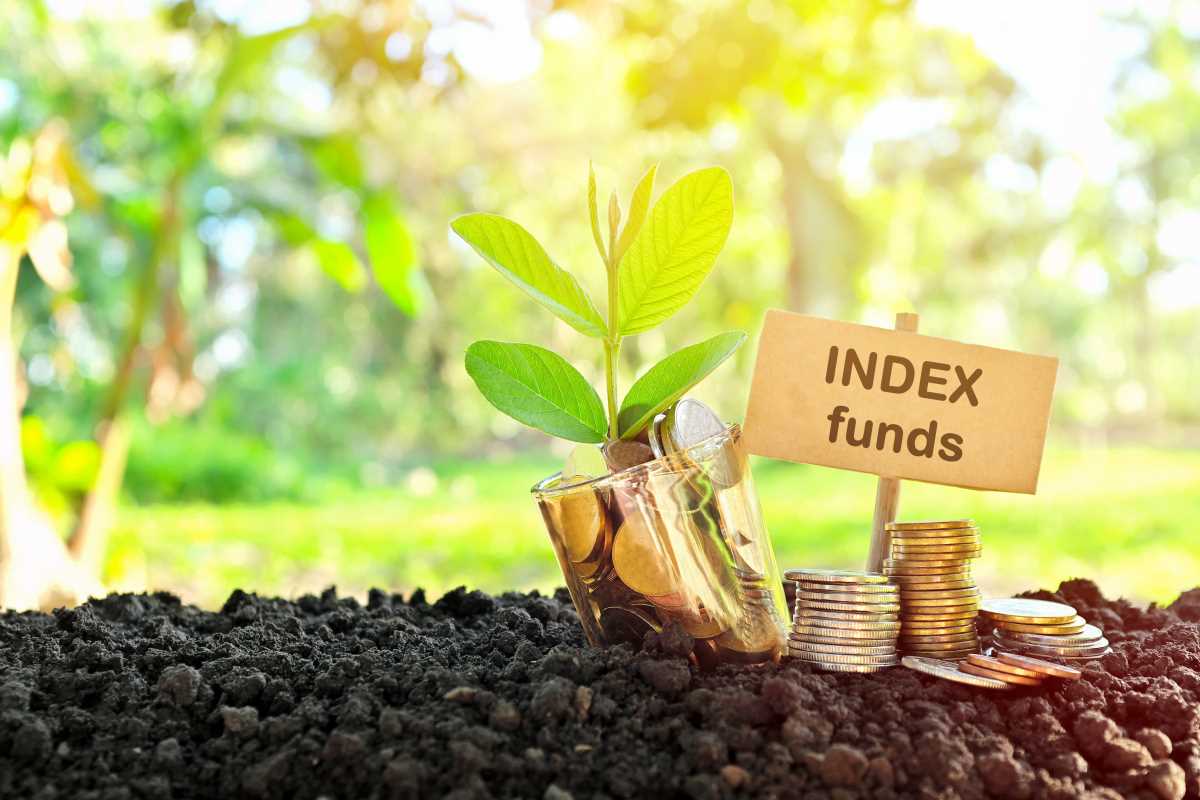Have you ever stood in a forest and marveled at how a tiny seed can grow into a towering tree? The natural world is full of powerful lessons about growth, resilience, and sustainability. These same principles can be applied directly to building personal wealth. Nature operates on proven systems that have worked for millions of years, emphasizing patience, diversity, and the power of compounding. By observing these processes, we can unlock a new perspective on our own financial journeys. We will explore the profound parallels between nature's wisdom and smart investing. You will learn how the slow, steady growth of a tree, the interconnectedness of an ecosystem, and the cyclical nature of seasons can guide you toward building lasting financial security.
The Seed: Starting Your Financial Journey
Every great fortune, like every giant sequoia, begins with a single seed. In finance, this seed is your initial investment. It might feel small and insignificant at first, but it holds immense potential. The key is to plant it and give it the right conditions to grow.
Planting Your First Seed
Starting to invest can feel intimidating, but the most important step is simply getting started. Your first investment doesn't need to be a large sum. Many platforms now allow you to begin with just a few dollars. This initial act of "planting" sets the foundation for your entire financial future. Think of it as choosing a fertile spot for your seed. You want to place your money where it has the best chance to sprout and develop. This could mean opening a retirement account like a 401(k) or an IRA, or investing in a low-cost index fund.
The quality of the seed matters. A strong seed has a better chance of survival and growth. In investing, this translates to choosing quality assets. A well-researched stock, a reputable mutual fund, or a diversified exchange-traded fund (ETF) acts as a high-quality seed, giving your wealth a strong start.
The Power of Small Beginnings
It's easy to get discouraged when you see others with large portfolios. Remember the acorn. It doesn’t become an oak tree overnight. Your small, consistent contributions are the water and nutrients that will nourish your financial seed.
Consider these actions to get started:
- Automate your investments: Set up regular, automatic transfers from your bank account to your investment account. This "set it and forget it" approach ensures you are consistently nurturing your growing wealth.
- Start with what you can: Even $25 or $50 a month can grow into a significant amount over time, thanks to the magic of compounding. The habit is more important than the amount when you begin.
- Take advantage of employer matching: If your employer offers a 401(k) match, contribute enough to get the full amount. This is like getting free fertilizer for your seed—an instant boost to your growth.
The Forest: Diversification and Ecosystems
A single tree is vulnerable to disease, pests, or a strong storm. A forest, however, is a resilient and thriving ecosystem. It contains a wide variety of plants, animals, and microorganisms that support and sustain one another. This is nature’s model for diversification, one of the most powerful concepts in investing.
Building Your Financial Ecosystem
Diversification means not putting all your eggs in one basket. By spreading your investments across different types of assets, you reduce your risk. If one part of your portfolio is struggling, another part may be thriving, creating balance and stability. A well-diversified portfolio is like a healthy forest ecosystem.
Your financial ecosystem might include:
- Stocks: Representing ownership in companies, these are your tall trees, offering highf potential but also more volatility.
- Bonds: Loans to governments or corporations, these are like the steady, sturdy undergrowth, providing stability and predictable income.
- Real Estate: Owning property is like having a solid plot of land in your ecosystem, offering potential for appreciation and rental income.
- Commodities: Raw materials like gold or oil can act as a hedge against inflation, similar to the bedrock that provides a foundation for the entire forest.
Interconnected but Independent
In a forest, different species rely on each other. Bees pollinate flowers, fungi break down dead wood into nutrients, and large trees provide shade for smaller plants. Similarly, different asset classes in your portfolio can work together. But, they don't all move in the same direction at the same time. When the stock market is down, bonds might go up. This lack of perfect correlation is what makes diversification so effective at protecting your wealth from a single point of failure. You are building a portfolio that can withstand various economic "weather" conditions.
The Tree: Patience and Compound Growth
A tree grows slowly but steadily, adding a new ring each year. It doesn't rush, and it doesn't stop. This patient, persistent growth is the perfect metaphor for compounding. Compounding is the process where your investment earnings begin to generate their own earnings.
The Magic of Compounding
Imagine a sapling. In its first few years, movement is barely noticeable. But over decades, it transforms into a massive tree. Your investments work the same way. In the beginning, the returns may seem small. But as your initial investment and its earnings continue to grow, the process accelerates. The "snowball effect" takes over, and your wealth begins to expand at an ever-increasing rate.
Patience is the essential ingredient for compounding to work its magic. It is tempting to chase quick profits or panic during market downturns. But the most successful investors, like a patient gardener, understand that true expansion takes time. They stay invested, continue to contribute, and let their wealth compound year after year.
Weathering the Storms: Resilience
Trees are built to withstand storms. Their deep roots anchor them to the ground, and their flexible branches bend with the wind. Your investment portfolio needs similar resilience. Market downturns are the financial equivalent of storms. They are inevitable and can be frightening.
Here’s how you can build resilience into your financial plan:
- Have a long-term perspective: Don't make emotional decisions based on short-term market noise. Remember that historically, markets have always recovered from downturns and gone on to reach new highs.
- Maintain an emergency fund: This is your financial root system. Having three to six months of living expenses saved in cash prevents you from having to sell your investments at the worst possible time during a financial emergency.
- Rebalance your portfolio: Periodically review your asset allocation and make adjustments to bring it back to your target mix. This is like pruning a tree to ensure it's healthy and balanced.
The Seasons: Understanding Market Cycles
Nature operates in cycles: spring, summer, fall, and winter. Each season has a purpose and is a necessary part of the whole. Financial markets also move in cycles of expansion and contraction. Understanding and respecting these cycles can help you become a more disciplined and successful investor.
Spring: The Season of Growth
Spring is a time of new beginnings and rapid expansion. In the market, this corresponds to a bull market or an economic recovery. Investor optimism is high, and asset prices are generally rising. This is a great time to be invested and to watch your portfolio flourish.
Summer: The Peak of Maturity
Summer represents the peak of the growth cycle. The market may still be strong but might start to slow down. This can be a time of market maturity, where gains are still possible but caution is warranted. It’s a good time to enjoy the fruits of your investments but not become complacent.
Fall: The Time of Harvest and Correction
In autumn, leaves change color and fall from the trees. This is nature’s way of preparing for winter. In investing, this can be a period of market correction or decline. Prices may fall, and investor sentiment may turn negative. This is a natural part of the cycle. For a long-term investor, it can be an opportunity to "harvest" tax losses or to buy quality assets at a lower price.
Winter: The Period of Rest and Opportunity
Winter is a dormant season. In the markets, this can be a bear market or a recession. It may feel bleak, but it is a crucial time for resetting. Below the frozen ground, roots are strengthening and preparing for the next spring. For the prepared investor, a market winter is a time of incredible opportunity. It allows you to accumulate assets at bargain prices, setting the stage for explosive growth in the next cycle.
By understanding these cycles, you can avoid the two biggest investing mistakes: buying high out of greed during the summer and selling low out of fear during the winter. Instead, you can adopt the mindset of a farmer, using each season to your advantage.
Your Path to a Thriving Financial Future
Nature provides the ultimate blueprint for building lasting wealth. By planting your seeds early, diversifying your holdings like a forest, patiently letting your investments compound like a growing tree, and respecting the natural cycles of the market, you can cultivate a financial future that is resilient, sustainable, and abundant. Take these lessons to heart, and empower yourself to turn your financial dreams into a thriving reality.
 (Image via
(Image via





